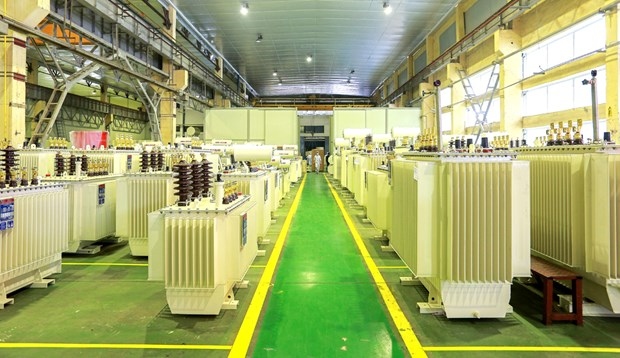Capital needs breakthrough solutions to sci-tech firm development issues
Housing 149 out of Vietnam’s 712 sci-tech companies, Hanoi remains in need of breakthrough solutions so that the capital city can quickly raise the local quality and quantity of businesses to reflect its true potential.

In 2020, the municipal People’s Committee issued Plan 49/KH-UBND on supporting the growth of local enterprises toward 2025. The city is now taking the lead nationwide in the assistance and development of sci-tech firms who operate across a diverse range of sectors including ITC, biotechnology for agriculture and health, new material technology, and environmental protection technology.
Le Thanh Hieu, former head of the Hanoi Department of Science and Technology’s technology management office, said that 90% of the companies conduct research using their own capital or receive technology transfers from other organisations and individuals and make them part of their production, while a mere 10% of them incubate and develop technology from outcomes of State-funded projects.
According to Director of the department Nguyen Hong Son, the city has always paid attention to supporting science and technology enterprises via programmes and plans serving the implementation of various related development measures. As a result, the group has boldly invested in technological innovation and improved products’ quality and value.
The capital aims to have at least 200 firms of this kind by 2025. The current number of 149 is considered falling short of its potential. The local related support mechanism and measures still show shortcomings and shortages.
In particular, its incomplete legal framework regulating the type of sci-tech enterprises poses a significant barrier to the establishment and development of the firms. In addition, a few of them are allowed to participate in and lead projects to create new technologies and directly translate research and testing results into the production of commercial goods. Meanwhile, there are only three sci-tech enterprises recognised as key industrial manufacturers of the city.
Luu Hai Minh, Chairman of the Board at the Nhat Hai New Technology JSC – one of the three key manufacturers, said capital is the biggest difficulty facing enterprises in the field of science and technology. They cannot bring intellectual property to the bank as mortgage, while concessional loans are difficult to access, he explained.
Recently, Hanoi has designed a plan to develop itself into a smart, modern, green, clean, beautiful and safe city and the leading centre of innovation, development research and technology application and transfer of the country, heading to be a sci-tech hub in Southeast Asia.
Accordingly, its rate of high-tech agricultural production in overall production value of the agricultural sector is set to hit 70% in 2025 and over 85% in 2030. The city will also strive for its rate of high-tech value in the processing-manufacturing sector to reach over 70% in 2025 and 85% in 2030.
The capital will also work to have 12 science-technology researchers and developers out of each 10,000 people in 2024, and 14 out of each 10,000 people in 2030.
To this end, the city will set aside 1.2-1.5% of its GRDP to invest in related development. The rate will be 1.5-2% in 2030.
